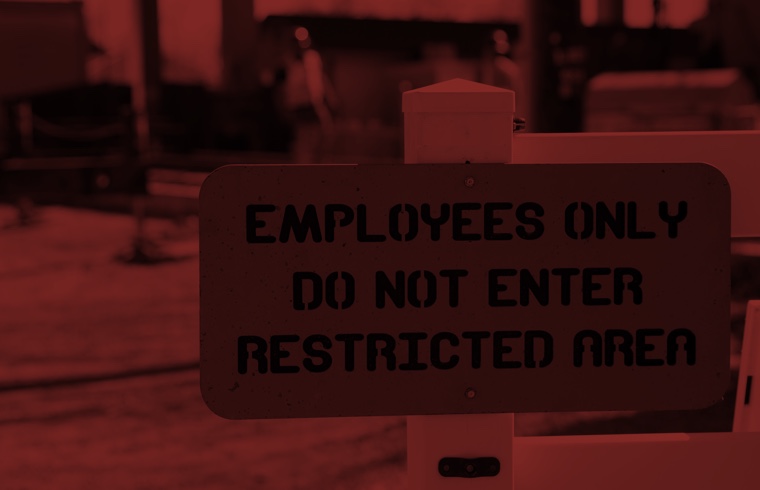National Work Zone Awareness Week, which is recognized from April 17th to April 21st, 2023, is an opportunity for all to recognize both the challenges and the inherent risks presented in work zones. This year’s theme is the following: “You play a role in work zone safety. Work with us.” We are using this opportunity to illustrate a few different claims examples to show how issues, such as those involving paving subcontractors and initial site assessments, can manifest themselves. Common exclusions within a commercial general liability (“CGL”) policy, such as an absolute pollution exclusion, are also explored. Finally, key elements of a Contractors Protective and Professional Indemnity (CPPI) insurance policy are identified.
Claims Examples
- Tri County Service Co., Inc. v. Nationwide Mut. Ins. Co.
Here, Tri County Service Company, Inc. (“Tri County”), a parking lot paving subcontractor, had secured both a CGL and an umbrella policy with Nationwide for its H.E.B. parking lot project. During this project, MC-30 prime oil was sprayed onto the construction site’s parking lot base material; this work was performed by a Tri County subcontractor. Following this, a strong storm resulted in the oil washing into a creek. In response, H.E.B. incurred the costs of oil removal, deducting the cost of clean-up from Tri County. When Tri County sought coverage under its Nationwide policies, coverage was denied based on the pollution exclusions contained within its policies. The Court determined that coverage was unavailable because the pollution exclusions prevented coverage for any liability relating to either the release or escape of pollutants connected to a location that was either occupied by the Insured or where the Insured was performing operations there.
- James River Ins. Co. v. Ground Down Engineering, Inc.
This case addressed whether coverage was available under a professional liability policy when an engineering firm, Ground Down Engineering, sought coverage for a claim filed by a developer, arguing that the engineering firm was negligent when it did not identify underground storage tanks or construction debris while completing an environmental site assessment. Within the policy, a pollution exclusion existed; James River argued that coverage was unavailable because failure to discover either the construction debris or the petroleum holding tanks fell under the ‘arising out of pollution’ policy language, excluding coverage. The Court established that even though the claim itself was based on that of a negligent site assessment the developer’s claim centers on the presence of environmental contamination, resulting in the claim being excluded from policy coverage. Even though the engineering firm was not the source of the resulting pollution, coverage was still unavailable under these circumstances.
Contractors Protective and Professional Indemnity (CPPI) Insurance: An Overview
The above claim examples illustrate how certain CGL exclusions result in coverage being unavailable when pollution conditions are excluded from policy coverage. Various environmental and professional liabilities may present themselves, and both contractors and design-build firms are not immune from such exposure. For example, someone in a design-build contractor capacity needs to be aware of the four basic coverage options available under a Contractors Protective and Professional Indemnity (CPPI) insurance policy.
There are four essential coverage features in a CPPI policy:
- Professional Liability: Third-party coverage would be available to design-builders for those claims involving alleged negligent acts, errors or omissions in either the course of professional services performed by the contractor or by that of a downstream design professional acting on behalf of the contractor. In a design build capacity, for example, this could encompass alleged negligence in the preparation or approval of maps, shop drawings, surveys, specifications, change orders, and other additional forms of professional services.
- Protective Indemnity: This component allows for the design-build contractors to be reimbursed for the funds that they are entitled to recover from a downstream professional that are in excess of that particular design professional’s insurance limits. Essentially, this facilitates another layer of protection for the design-build contractor when it is held liable for damages in excess of the insurance limits from the responsible architect or engineer’s insurance program.
- Rectification: Mitigation of loss damages are synonymous with rectification expenses. In a design-related risk context, this is actually a proactive approach because it helps to mitigate the improper design before than design translates to bigger issues, possibly resulting in a third-party claim being filed. When critical design-related issues emerge during the construction phase, a design-build contractor can access necessary funds to address such errors in design so that the project can continue, minimizing the budget/schedule impacts while maintaining a positive relationship with the owner client.
- Contractors Pollution Liability (CPL): CPL coverage can encompass bodily injury (BI), property damage (PD), and also the clean-up costs associated with pollution conditions that were generated by either the contractors themselves or the contractor’s sub-operations associated with that particular project. This type of pollution coverage can be included in CPPI or offered on a stand-alone basis.
If you are interested in more information, please contact one of our producers about the specific limits that may be available.
By: Jessica Cambridge

Leave a Reply